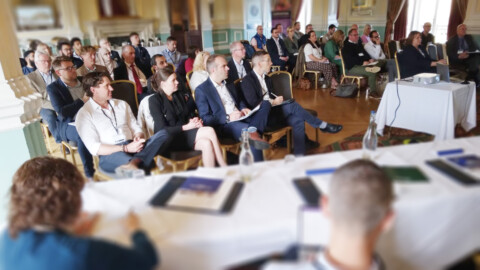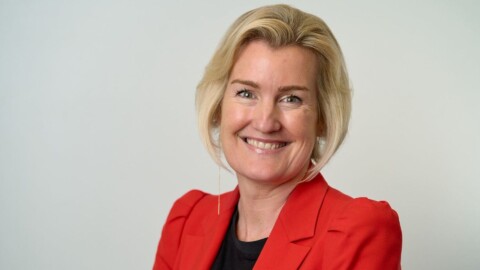UK business investment is expected to decline
UK business investment is expected to decline this year despite the prospect of record economic growth, according to the British Chambers of Commerce (BCC) economic forecast.
The leading business group predicts UK GDP growth for 2021 of 7.1%, which, if realised, would be the strongest outturn since official records began in 1949.1
Following robust GDP growth in the second quarter, the UK’s economic recovery is projected to slow into the autumn as staff shortages and supply chain disruption partly limit the gains from the lifting of restrictions in July. Consequently, the UK economy is only expected to return to its pre-pandemic level in Q1 2022 with growth of 5.2% forecast for 2022.
The UK’s economic recovery is expected to be driven by historically strong consumer and government spending:
- Despite signs of renewed consumer caution amid risingCovid cases, the momentum from the ending of restrictions is projected to deliver the strongest growth in household spending in 33 years as consumers rundown some of the savings built-up during lockdowns.
- Government spending is expected to grow by 13.1% in 2021, which would be the strongest growth on record. This includes covid related expenditure such as the vaccine rollout and the test and trace programme.
In contrast, business investment is forecast to decline by 2.5% this year. The damage done to firms’ finances by the pandemic, a more onerous tax regime and concerns over the potential for future covid restrictions are expected to weigh heavily on investment intentions, despite the introduction of the super-deduction incentive.
Consequently, business investment is forecast to remain 5.4% lower than its pre-pandemic level by the end of the forecast period in Q4 2023. In contrast, consumer spending is projected to be 5.1% higher than its pre-pandemic level over the same period.
After the furlough scheme closes at the end of the month, the UK’s unemployment rate is expected to rise from its current rate of 4.7%2 to a peak of 5.1% in Q1 2022 – equivalent to another 124,000 workers unemployed. With firms’ finances still struggling to recover from Covid, and skills mismatches likely to limit the extent to which those seeking jobs after furlough can move into available roles, unemployment is projected to drift moderately higher in the near term, despite staff shortages.
The upward pressure on prices from a range of factors, including the release of pent-up demand as restrictions eased and the rising cost of raw materials amid ongoing supply chain disruption, are expected to push CPI inflation to a peak of 4.0% in Q4 2021, which if realised would be the highest rate since Q4 2011. However, as supply chains adjust post-pandemic and demand moderates as government stimulus fades, inflation is expected to drift back to target by the end of 2022.
The BCC forecast assumes no renewal of lockdown restrictions. Another scenario would lead to revisions in the next forecast.
Commenting on the forecast, Suren Thiru, Head of Economics at the British Chambers of Commerce, said:
“The UK economy remains on course for a historic revival this year as the release of pent-up consumer demand as restrictions end, and higher government spending helps drive a substantial surge in economic activity.
“However, our latest outlook also points to a loss of momentum in the coming months as staff shortages, supply chain disruption and rising cost pressures limit output from many sectors.
“It is concerning that business investment looks like being the weak point of the recovery because it undermines the UK’s ability to raise productivity and increase our long-term growth prospects.
“Our latest forecast also suggests that the UK economy will emerge from covid more unbalanced with a growing dependence on household consumption to drive growth. Such imbalances leave the UK more susceptible to future economic shocks, such as renewed lockdown restrictions.
“Heightened uncertainly still looms over UK’s economic outlook. A prolonged period of acute supply and staff shortages could derail the recovery by forcing firms into a more permanent reduction in their operating capacity, eroding their ability to fulfil orders and meet customer demand. Renewed restrictions would also weaken the projected economic revival by damaging confidence and limiting activity.”
Responding to the forecast, Hannah Essex, Co-Executive Director the British Chambers of Commerce, added:
“The prospect of record economic growth this year underscores the resilience of the UK economy and hard work of businesses across the country.
“However, with Covid cases rising and an increasing number of firms reporting staff shortages, rising cost pressures and supply chain disruption, the Government must guard against complacency. A comprehensive rebuild strategy is needed to safeguard the recovery.
“Government needs to give business a clear contingency plan for any future outbreaks, including what financial support will be provided. A more flexible immigration system is needed to tackle labour shortages, alongside training and support for furloughed workers – whether they are returning to the workplace or the wider labour market.
“An economic recovery without business investment is one built on shaky foundations. Bold steps are needed to encourage both domestic and international investment, including delivering on our longstanding call for fundamental reform of our broken business rates system and major incentives to stimulate business investment over the long term.
“Signals also matter, there is a real danger the National Insurance increase announced this week could stifle the recovery. Any further tax changes could very well prolong the economic damage from Covid.”
Key points in the forecast:
- UK GDP growth forecast for 2021 is 7.1%, 5.2% in 2022 and 2.1% in 2023
- Following the Q2 2021 growth of 4.8%, quarter-on-quarter GDP growth forecastof 2.8% in Q3, (down from our previous forecast of 3.5%) and 1.6% in Q4
- In terms of sectors:
- Growth in services output is forecast at 7.0% in 2021, 5.6% in 2022 and 2.0% in 2023
- Growthin manufacturing output is forecast at 8.6% in 2021, 5.1% in 2022 and 2.0% in 2023
- Household consumption forecast is for growth of 5.5% in 2021.Growth of 7.6% forecast for 2022 and 2.8% in 2023
- Business investment forecast is for a decline of 2.5% in 2021, before growth of 6.5% in 2022 and 1.4% in 2023
- BCC expects export growth of 1.0% in 2021, 5.9% in 2022 and 1.5% in 2023, compared to import growth of 3.4%, 8.2% and 2.4%
- BCC expects UK unemployment rate of 4.9%, 4.7% and 4.4%, comparedto youth unemployment rate of 13.7%, 13.5% and 13.1%
- CPI inflation is expected to rise in the near-term, peaking at 4.0% in Q4 2021. Inflation is then expected to drop back to the Bank of England’s 2% target in Q4 2022
- UK official interest rates are expected to start rising in Q4 2022, followed by a second rate rise in Q4 2023







